Note: This website was automatically translated, so some terms or nuances may not be completely accurate.
Creative Work at the Japan Pavilion, "Expo Milano" (Part 2)
On May 1, the Milan International Exposition (Expo Milano) opened.
With the theme "Feeding the Planet, Energy for Life," over 140 countries and regions are participating. On the second day of the opening in Milan, Mr. Jun Naito of Dentsu Inc., who produced the Japan Pavilion, discussed the creative intentions behind the Japan Pavilion with Mr. Toshiyuki Inoko of teamLab and Mr. Seiichi Saito of Rhizomatiks. Continuing from the first part, here is the second part.
Interview, Editing, and Composition: Aki Kanahara, Dentsu Inc. Event & Space Design Bureau
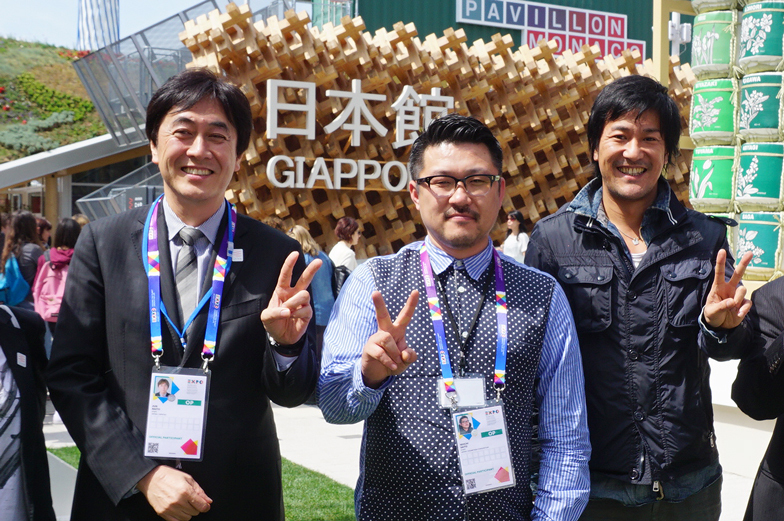
How to Approach the "Milan Expo" Venue Through Expression
Naito: While this Expo is held in Italy, Milan is known as a city of fashion, design, and art. Did you consciously think, "Let's show these sophisticated Milanese something special," or have a similar mindset?
Saito: We're usually pretty hardcore. Loud noise, bright lights, and that's it (laughs).
Usually, Rhizomatiks creates works that are very much the domain of so-called science-minded guys. This time, we decided to stop doing that.
We discussed internally that technology should be secondary; content comes first. Ultimately, we deliberately went for that grand finale, that easily digestible content. But seeing the reaction on the first day, Europeans really like that immersive type of thing, don't they?
We wanted people to watch 40 minutes of content, get bombarded with information, and end with "Ah, that was fun!"
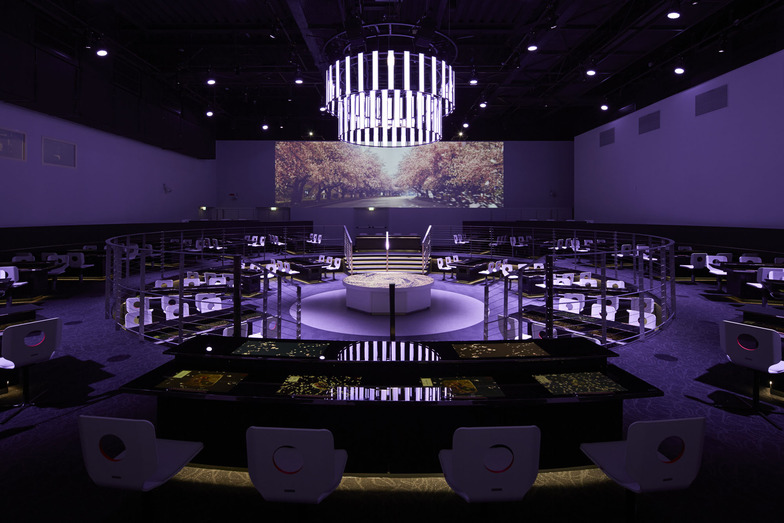
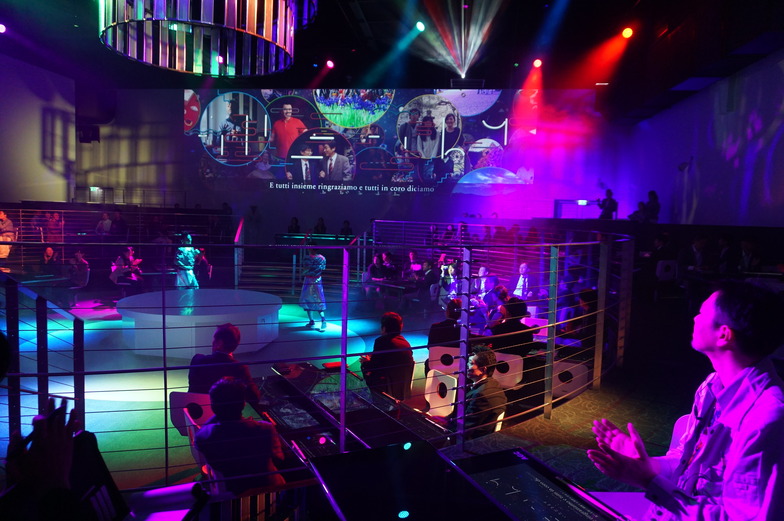
【LIVE PERFORMANCE THEATER: Rhizomatiks Seiichi Saito】
Communication born at the dining table. A future restaurant connecting the world with smiles.
Naito: It definitely feels different from the usual Rhizomatiks. Is that because of Saito-san's kindness?
Saito: Kindness, maybe (laughs). In terms of viewing order, it also serves as a summary when our work is the last piece to leave the Japan Pavilion.
Naito: The aftertaste is important, after all. Inoko-san, what are your thoughts on the setting of Milan, Italy?
Inoko: Honestly, I don't really think about the location where it's shown.
I always hope that people around the world can abstract knowledge into something that gives them hints about themselves.
Naito: That abstraction is a Japanese way of thinking, isn't it?
I feel like Japanese aesthetics are at its core. Western religious paintings, for example, are very concrete, aren't they?
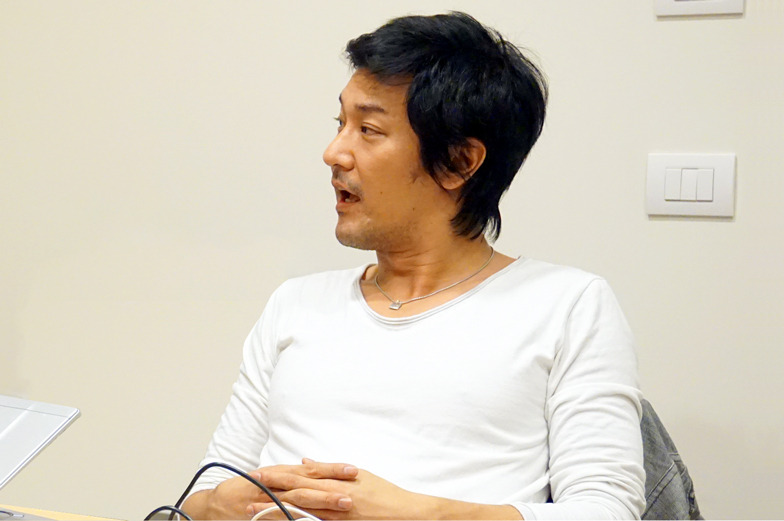
Inoko: Yes. Abstracting cultural knowledge unique to Japan into something that can inspire others. If we compete on coolness within a Western framework, we'll lose to Westerners.
But if we can abstract Japanese culture and everyone references it, I think Japan wins in that regard.
Naito: Patriotism talk...? (laughs).
Inoko: No, it's not patriotism. For example, the beauty of Apple products is a huge hint and reference point for us too. I think Japanese people actually use them. I think we're using the beauty Apple created all the time.
But no matter how much Japanese people imitate that Western-style beauty like Apple's, we can't become the best in the world. That's why we want to abstract it down to something everyone can use, and create something we want people overseas to take back home!

Saito: Japanese creation doesn't act as the subject; it's treated more like an adjective. There's this sense of continuous optimization. It's like, "We'll keep customizing it to fit you." It feels like the root of Japan's culture and manufacturing isn't "This is 100% what I made, so everyone should adapt to it," but rather a culture of adapting to the other person.
Japanese creativity—whether in agriculture or manufacturing—is so meticulous that the way it ultimately surprises, moves, or makes people smile is truly inimitable.
But it's frustrating that it's not Japanese people who come up with those huge, game-changing ideas.
Naito: But you two are doing game-changing things!
By the way, how was your culinary collaboration with Mr. Yoshihiro Murata of the ryotei Kikunoi regarding kaiseki?
Saito: It was great. He was such a nice person. He looks pretty intimidating though (laughs). When I said, "Oh, this dish is beautiful," he replied, "Mr. Saito, you could buy about two houses with this" (laughs). It was a Rosanjin plate.
Naito: The bento box in the video was like a national treasure from the Edo period, wasn't it? It was amazing how well you guys, the top of the entertainment world, connected with Mr. Murata and the top of the culinary world.
Saito: That's right. We also had costumes made by Iijima-san, who designs Kyary Pamyu Pamyu's outfits, and music composed by Konishi-san from Pizzicato Five. Since we were doing this, we wanted the absolute best people involved. Having Murata-san join made it the perfect collaboration. Seeing the audience leave the theater smiling and saying, "I'm starving~!" was really great.
I want to make many audience members hungry, spark their interest to visit Japan, and spread the word about Japanese cuisine.

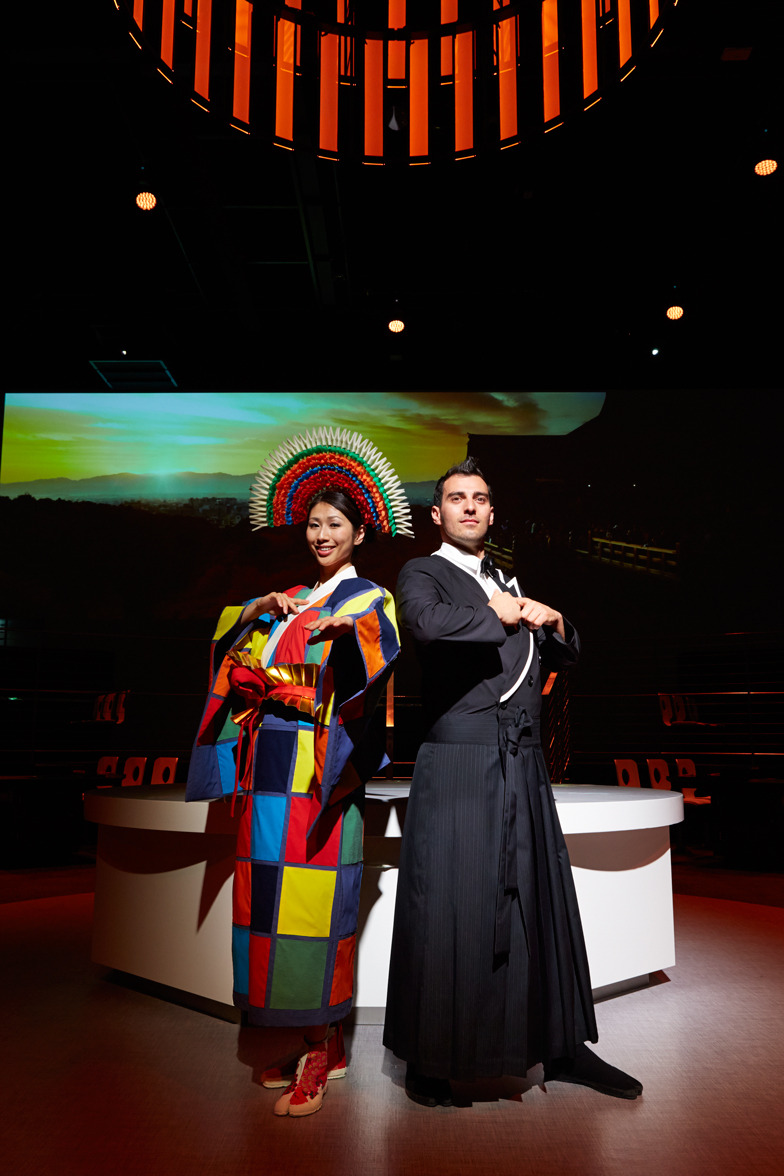
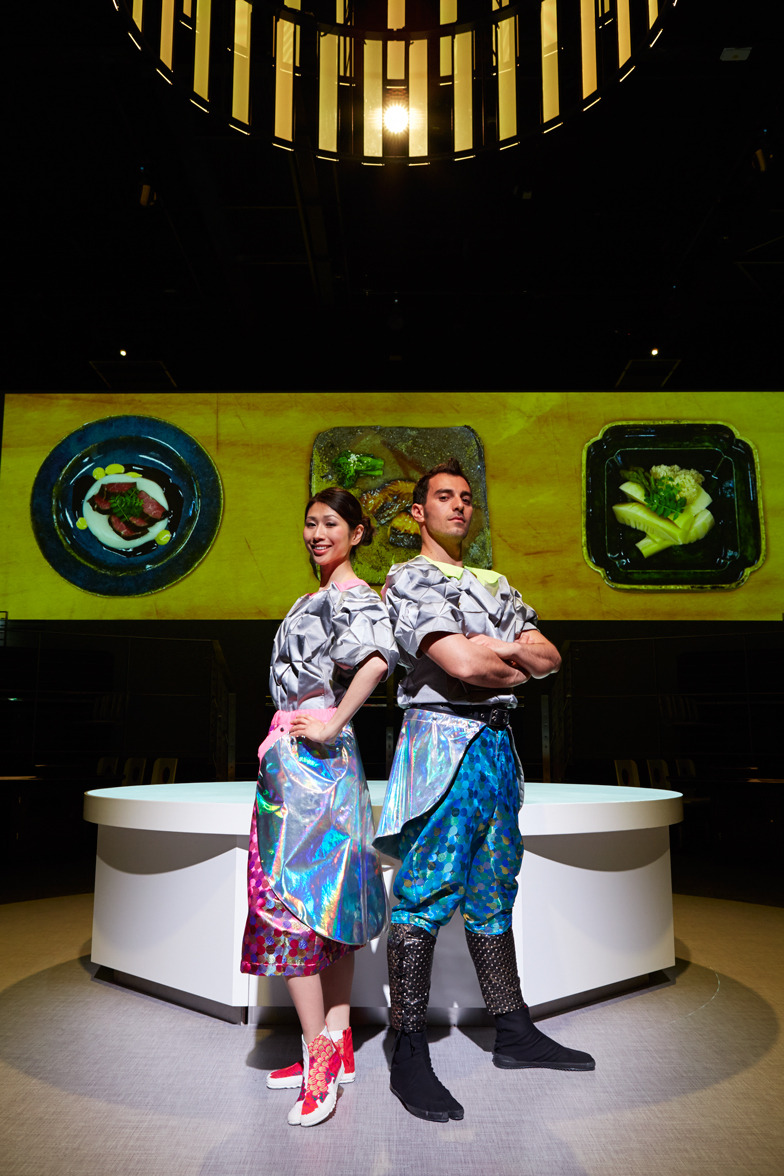
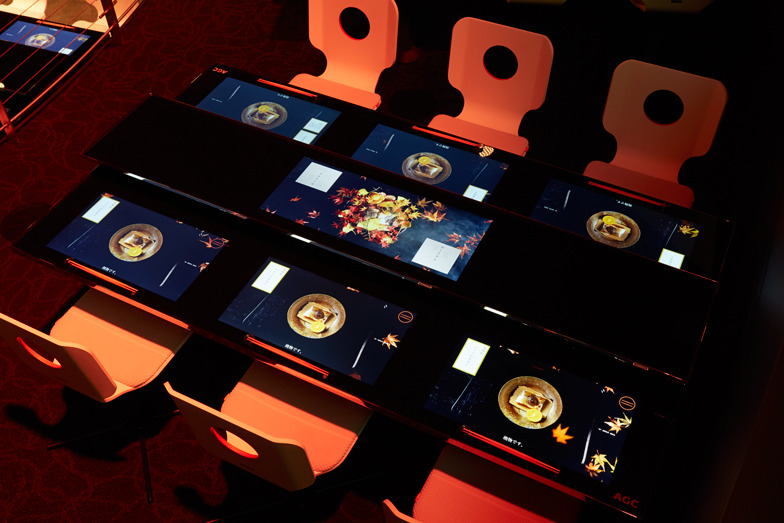

The Unpredictable Difficulty of Expression Using Technology
Saito: When I saw TeamLab's "HARMONY" in perspective, I wondered how they made it.
Inoko: Because I hadn't experienced it myself. I said it, but could it even be made? (laughs).
Naito: At first, the rice ears looked like broccoli, right? They branched out, some square, some round, all different sizes (laughs).
Personally, I wanted to express the primal Japanese landscape I felt as a child. I hoped it would evoke that feeling of walking into a rice paddy or wheat field in the countryside. When I told Inoko-san, he said the image of plunging right into the rice stalks was exactly what he envisioned.
That said, I did worry about what would happen if the device didn't display any images, even with the rice stalks growing there. Apparently, 38 stalks broke on opening day yesterday (laughs).
But everyone says it's all within expectations.
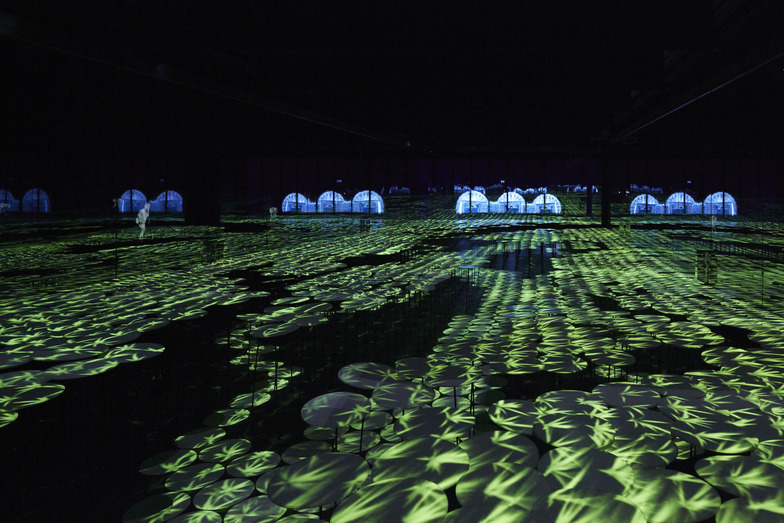
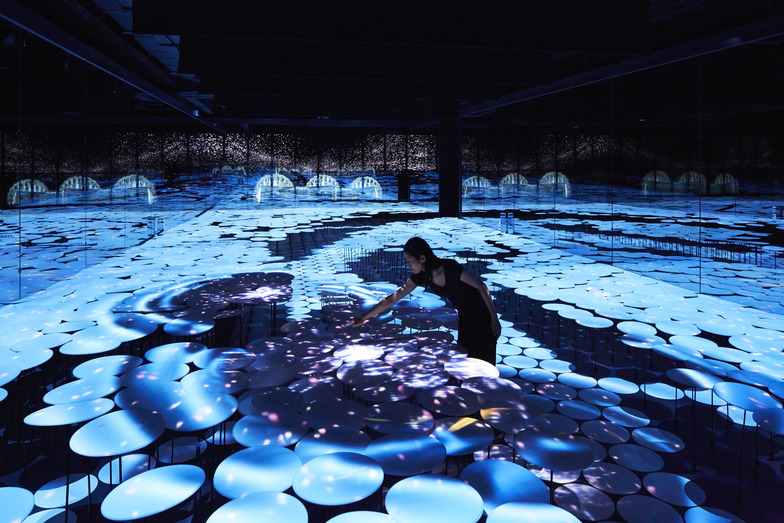

【HARMONY: teamLab】
Introducing Japan's food-producing regions. Visitors are immersed in beautiful Japanese rural landscapes through a video space surrounded by mirrors and a waist-high "rice ear screen."
Inoko: It's like wanting to experience something you don't know yourself. That's the ultimate goal of creating art, right? I never thought an idea like this would actually get approved (laughs).
Mr. Naito is the best, and Dentsu Inc. production is seriously impressive! I thought it was amazing.
Naito: I've already forgotten how we managed to get through all the mid-process reports and checks for the various stakeholders (laughs).
The Expo is both a showcase and a battle of each country and region's culture.
Naito: Today is day two, and there's still a long way to go, but seeing the Milan Expo and everything around it, do you feel anything?
Saito: I think more local Italians will come as time goes on, so I'm looking forward to that. I wonder what it will be like when Japan Day comes around in July.
Naito: The chopsticks from Rhizomatiks' Future Restaurant haven't really run out yet either.
Saito: The chopsticks? They're still all here! That's great. They're high enough quality that if we put them in chopstick sleeves, we could probably sell them.
Naito: Everyone's been very polite and leaving them neatly. I hear Inoko-san is walking around the Expo grounds with incredible energy, saying "Expo is fun, fun!" (laughs).
Inoko: This is actually my first time properly visiting an Expo. It's like an amusement park for adults—so much fun! But isn't an Expo like a cage of cultures, a battle? If you win with your content, it brings huge cultural and economic benefits to your country or region, but if you lose, it's just a waste of money. I think it has to win to be meaningful.
Saito: That's absolutely right!
Naito: That's reassuring! Thank you for taking time for this interview during such a busy period right after the opening. Let's run together for the next six months!
<End>
Was this article helpful?